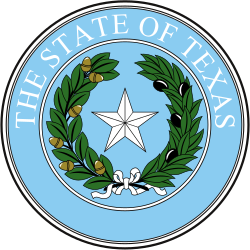Background
Democrats had controlled the Texas Senate since the 1872 elections. The 1992 elections had been held under lines drawn by federal courts, which had overturned the maps passed by the legislature as unconstitutional partisan gerrymanders. [1] Democrats had tried to pass their own maps for the courts to allow in a January 1992 special session, but the courts rejected these maps and imposed their own. [2] [3] Democrats took issue with the presence of Judge James Robertson Nowlin on the panel. Nowlin was a former Republican state representative who had taken part in the controversial 1981 redistricting. Nowlin would later admit to being in contact with multiple Republican House members concerning the districts the courts were drawing. Democrats sought Nowlin's recusal from the case because of this, but the plans had already been enacted by the time this had occurred. [4]
The court-imposed maps were seen as highly favorable to Republicans, and they believed they had the opportunity to win the chamber for the first time sine Reconstruction under them. [5] [6] Republicans made substantial gains in the 1992 elections, gaining four seats from the Democrats, but they failed to win control. [7] With Judge Nowlin no longer on the federal panel, the 1994 elections were allowed to be held under the lines passed by the legislature in the January 1992 special session. Despite the more favorable maps, the political damage had already been done to the Democrats, as many of the incumbents their map was designed to protect had already lost re-election in 1992. [4] Because the 1994 map was completely different from the 1992 map, all senators were required to run for re-election, instead of only half of them. [8]
This page is based on this
Wikipedia article Text is available under the
CC BY-SA 4.0 license; additional terms may apply.
Images, videos and audio are available under their respective licenses.

